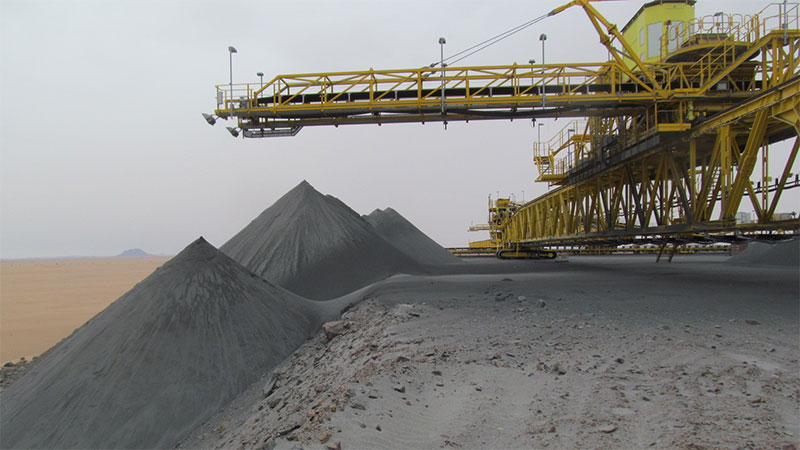Extract from an article first published in International Mining (IM) Magazine, July 2016 covering Tailing Storage Facilities – our thanks to IM for approval to publish the article.
Michael Blois, Business Development Specialist with TAKRAF notes two significant failures of tailings impoundments within the last two years. “The first of these highly publicized failures was at the Imperial Metals’ Mount Polley mine in British Columbia, in August 2014. The second at BHP Billiton/Vale’s Samarco mine in Brazil in November last year, sadly involved significant loss of life. Although these two failures represent the latest in an average of one failure per year, they have focused the attention of regulators and investors on the environmental and social license to operate risks associated with tailings impoundments. Further, they have highlighted the potential financial implications, both compensatory and punitive, that result from these failures.
The use of the Dry Stack Tailings (DST) is increasingly recognized as a method of mitigating the risks, both technical and financial, associated with wet tailings impoundments. “It is worth noting,” Blois says, “that the DST approach is not new; in 1909, Harry Adams described the use of DST for tailings disposal at Kalgoorlie, Western Australia.” In May of this year, the U.S. Environmental Protection Agency (EPA) stated that the Comprehensive Environmental Response Compensation and Liability Act (CERCLA) 108(b) Financial Responsibility Requirements for Facilities in the Hard Rock Mining Industry; Proposed Rule, is due to be signed by December 1, 2016. The EPA has indicated that “significantly increased credit reductions” are proposed for the “Engineered Controls/ Best Practices” associated with filtered tailings deposition when compared with wet tailings deposition.
It is acknowledged that the DST approach to tailings management is not universally applicable. For example, the size and capacity of individual filtration units has increased significantly in recent years. However, when the process facilities, i.e. concentrators, with capacities in excess of approximately 80,000 t/d are being considered, the number and size of required filtration units can become very large and fast approach the footprint area of the concentrator itself. Clearly, the capital and operating costs associated with these installations can also be very significant. In addition, locations with heavy rainfall may not be suitable for DST.
Tenova TAKRAF, as a supplier of both equipment and systems for DST, believes that it is critical to understand the importance of the “whole DST system.” The whole DST system is generally comprised of the following four components – thickening, filtration, transportation (either trucking or a combination of conveyors and stacking equipment) and the stack component.The dry stack itself obviously has a much longer lifetime than the thickening, filtration and transportation components that feed it. Therefore, the dry stack should be the starting point of the design of the system. TAKRAF does not undertake the geotechnical design of the stack but teams with geotechnical engineers who have expertise in the specific locations and designs of the stacks.
The design criteria for the dry stack can be summarized as:
- Location
- Topography
- Geology (including seismicity) and geohydrology
- Climate
-
Rheology of feed material
- Mineralogy of the particles
- Solids density
- Solids concentration
- Particle size distribution
- Particle morphology
- Degree of compaction
Both the rheology of the feed material and the degree of compaction have an impact on the bearing pressure achieved by the stack over time. These bearing pressures have a direct impact on the type of stacking equipment that can be used to transport the material across the surface of the stack prior to deposition.
Generally speaking, the crawler mounted stacking units have lower bearing pressures than tire mounted units but are more expensive. As a result, a cost / benefit analysis needs to be carried out on the method of transportation. Clearly, this analysis needs to take the geotechnical results into account. Indeed cost / benefit analyses should be performed on each of the DST components identified above. This is why TAKRAF believes that an understanding of “whole DST system” is essential to obtain the correct conclusions for each specific project.
Blois continues: “When selecting the appropriate filters (for example, the TAKRAF / Delkor horizontal linear belts or the F.A.S.T filter presses) in the filtration component, a key design criteria is the required moisture content of the filter cake as the product needs to be suitable for the transportation component. If the filter cake contains too much moisture then it will not be conveyable. Conversely, achieving a lower moisture content than is necessary usually results in higher CAPEX and OPEX than necessary. Indeed, the term “DRY Stack Tailings” can be regarded as a misnomer; the filtered product does not need to be dry to be transportable and usually the moisture content is between 12 to 20%. Nevertheless, although not strictly correct, the term dry stack tailings has become generally accepted throughout the industry.
“The same thought process applies to transition between the thickener component and the filter component.”
“In conclusion, the DST approach is one alternative to be considered in the mitigation of the risks associated with conventional wet tailings impoundments. As highlighted above, these risks cover many categories and include environmental, social license to operate, technical as well as financial. The design of a DST system requires an integrated and iterative approach. It is essential to begin with the end in mind; the geotechnical input to the design of the stack is critical. The dry stack itself will remain long after the mine has been closed, the process plant has been removed and the plant location reclaimed and restored.

